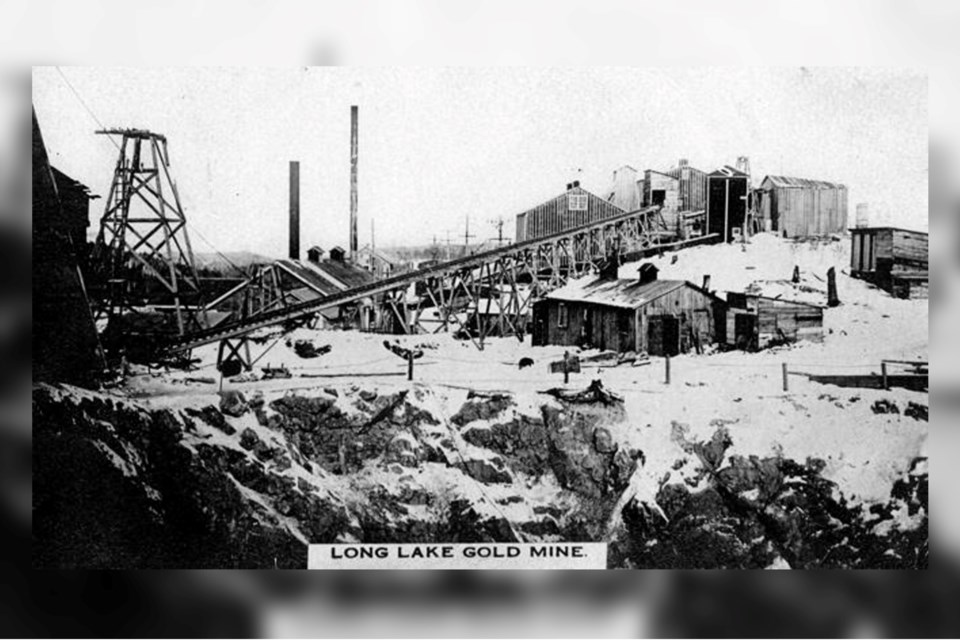There is a renewed effort in the works to get the old Long Lake Gold property in Sudbury cleaned up and rehabilitated. That's based on a recent letter from Ontario Mines Minister George Pirie to Nickel Belt MPP France Gélinas.
Pirie was responding to an inquiry from Gélinas with respect to whatever progress there might be on the former gold property located in Eden Township, just outside of the City of Greater Sudbury at the south end of Long Lake. Gélinas has been pursuing a government solution to the issue for several years.
The Long Lake Gold mine operated intermittently from 1908 to 1937 and produced approximately 200,000 tonnes of tailings, according to a 2019 online document from the Ontario Ministry of Northern Development, Mines, Natural Resources and Forestry. The mine also produced 52,000 ounces of gold at that time.
The document said the mine tailings were discharged directly to the environment without containment. Over the years, heavy metals contamination has occurred. Arsenic is one such byproduct of the gold refining process.
"The tailings have since eroded into Luke Creek and Long Lake. The tailings are acid generating and leach acidic water that is high in metal contamination, specifically arsenic. Recently ministry sampling in the south end of Long Lake identified arsenic contamination above the Ontario Drinking Water Standard," said the document.
In his letter to Gélinas, Pirie said the issue is complex but the mines ministry is working to address all concerns.
"My ministry remains committed to the rehabilitation of the former Long Lake Gold Mine in the Sudbury area, which has been identified as a high-priority rehabilitation project by the province," Pirie wrote.
Pirie’s letter outlined the following objectives:
- completion of the Cultural Heritage Evaluation anticipated for September 2022;
- Heritage Impact Assessment September 2022, with completion late fall/early winter 2022;
- file statement of Environmental Assessment (EA) due for completion in spring/summer 2023; and
- road improvements engineering design (DM Wills) are 90 per cent complete, with preparation of road improvements construction tender in late fall, targeting road construction work for summer/fall 2023.
"As you are aware, the environmental issues at the Long Lake Gold Mine are very complex. My staff have been working diligently to address all necessary regulatory requirements including its Class Environmental Assessment and permits/licences, to properly develop project scope and project management criteria, and to minimize risk to ensure the successful implementation of the rehabilitation work," said the letter.
The complexity refers not only to the technical aspects of containing tailings with arsenic or removing the tailings, but also with what appear to be conflicting interests of residents living in areas that might be impacted by the cleanup effort. Cottagers and home-owners at Long Lake cannot drink the water. Bottled water is required for drinking and cooking.
Some area residents have been pushing to have the tailings gathered and contained as quickly as possible, while others do not like the idea of heavy trucks travelling nearby and want further study of the alternatives.
An environmental assessment is expected to decide which method of remediation is most appropriate taking into account the effectiveness of containing the tailings, or removal/processing the tailings or burying the tailings. Long-term impact on the environment and the overall cost and long-term maintenance will also be considered.
Also to be taken into account is that "approximately one third of the fugitive tailings that will need to be removed are located on Atikameksheng Anishnawbek (Whitefish Lake First Nation) lands" and any plan will require the approval of that First Nation, said an executive summary provided by the Ministry of Northern Development and Mines.
Public commentary on the Long Lake issue has come primarily from the local Long Lake Stewardship group. One of the key figures in that organization, Stephen Butcher, was the man who first made it public 15 years ago that there was a problem. Butcher had water samples tested which revealed that high levels of arsenic were present.
Since then Butcher has expressed disappointment and frustration at the number of delays over the years.
"Not one shovel of the contaminated soil at the Long Lake Gold mine, which is causing the contamination of Long Lake, Round Lake, Penage Lake and all the rivers and streams that connect these lakes, has been removed," said Butcher in a recent email note.
When asked to comment further, Butcher wrote: "The incompetence is staggering at the ministry."
— Sudbury.com




